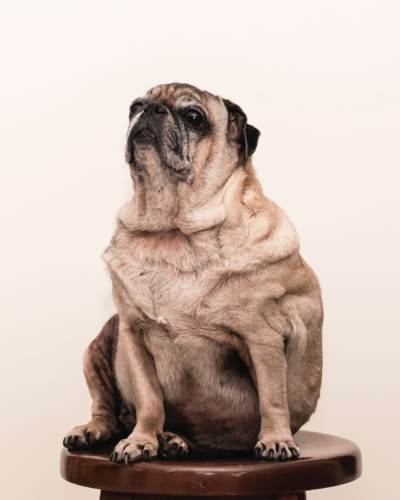Why Use a Canine Osteopath
Canine Osteopathy is a therapeutic approach to wellness that focuses on holistic treatments and hands-on techniques. The emphasis in osteopathy is the connection of all parts that make the body, and not on isolating any individual part during treatment. The emotional and physical needs of the dog are deeply considered in the osteopathic approach.
What Is Animal Osteopathy?

Animal osteopathy is an adjunctive therapy; it sits alongside, rather than replaces, veterinary care, adding to your animal's wellness. It's a neurologically informed therapy that holistically approaches a dog's body and mind, focusing on positively affecting the body by removing tension and restrictions from within it.
The goal of a canine osteopath is to find wellness, which is achieved through the improvement of the musculoskeletal system. The therapeutic treatment works to relieve pain by reducing bodily restrictions, improving movement patterns and fostering an environment that optimises the body's natural self-repair functions.
Canine osteopathy can be used to treat all dog breeds, regardless of size, age, and lifestyle. Moreover, professional sports dogs and agility dogs suffering from performance-inhibiting musculoskeletal imbalances show better performance results if they regularly receive animal osteopathic treatments.
What Are the Foundations of Osteopathic Treatment?
Although animal osteopathy has only been around for about three decades and mainly focuses on treating dogs and horses, it has been around for much longer in treating humans. In the 19th century, an American physician Andrew Taylor Still established the principles that became the foundations of the osteopathic profession. They are today applied in human and animal osteopathy.
There are four main principles:
The body is a unit of interconnected systems.
The body is capable of repair and self-healing functions when the functioning of all systems is optimal or unimpeded.
Structure (anatomy) and function (physiology) are interdependent.
When one area of the body is strained, compensatory issues can develop.
Therefore, osteopathy as a modality encourages health by finding the body's innate state of wellness. The manual therapy techniques are applied to the musculoskeletal framework, working to release symptoms of somatic dysfunction. Animal osteopath will work with the joints, muscles, and spine and perform careful but effective hand movements that positively affect the nervous, circulatory and lymphatic systems of the animal patient.
How Do Animal Osteopaths Work?

Most animal osteopaths specialise in the treatment of equine and canine patients, although often, they also treat other companion animals such as cats. Those that focus on treating dogs are termed Canine Osteopaths, and those that focus on treating horses are termed Equine Osteopaths, with Animal Osteopaths treating both.
Before the treatment itself, communication with the owner or handler of the animal is very important. Furthermore, animal osteopaths collaborate with other specialists, so they often communicate with the veterinarian and other animal healthcare professionals so that the treatment of the animal is of the greatest possible benefit.
After gathering a detailed history and observing the animal's movement and emotional state, they begin the physical treatment. During the treatment of either horses or dogs, their behaviour and reaction to touch are monitored; animals have strong non-verbal communication skills, which the animal osteopath must attune themselves to.
Physical assessment
In order to identify tension or restriction in the dog's musculoskeletal system, animal osteopaths rely on observation and a hands-on approach. By using specialised and safe techniques, they look for the causes of pain or poor performance by assessing joints, muscles and spine. After completing this step and basing their observations on the assessment, the animal osteopath will determine a treatment plan.
Treatment
Animal osteopathic treatments involve a range of techniques that move the body to improve blood flow and regulate the neurological system. A primary goal of osteopathic treatment is to improve the horse or dog's quality of life, and this is encouraged by working to improve mobility and flexibility, reduce pain and improve performance.
Benefits of Regular Treatments

Animal osteopathic therapy has proven to be very successful in increasing vascular and lymphatic drainage, pain reduction, joint mobility and overall physical and emotional health. Regular treatments may reduce the risk of injury in dogs whose joints are under more pressure due to lifestyle (dog athletes) and help eliminate or reduce pain in dogs suffering from conditions such as arthritis—a very common condition, especially in older dogs.
These treatments are designed to improve the whole body, helping areas that are strained due to compensation, in addition to the primary concerns. This is how holistic wellness is promoted.
What Conditions Can Canine Osteopathy Help Treat?
Canine Osteopathy is a holistic approach, benefiting the body and mind. It can be useful in alleviating symptoms of various conditions, such as those listed below, and can safely be used alongside Veterinarian Care.
Muscular problems (visible by the appearance of stiffness, spasms or atrophy)
Gait problems (short or uneven steps)
Aging problems (often manifesting through arthritis)
Joint pains (visible as lameness, limping)
Back pain
Neck pain
Hip problems
Changes in behavioural patterns, inability to relax or even aggressive behaviour
Poor or reduced performance levels
Circulatory problems
Digestive problems
Post-operative treatment.
How to Know My Dog Needs to see a Canine Osteopath?
Unlike humans, dogs won't tell us directly if something is wrong with their health but will give many non-verbal signs. Changes in behaviour, personality, performance, appetite, and the like should prompt us to think that something is amiss with our dog. If you notice any of the following, consult a veterinarian and ask about animal osteopathic therapy and its benefits in your dog's specific health case.
Non-verbal signs that indicate a health condition that a canine or animal osteopath could help are:
lameness /altered gate
weight shifting to one side
reluctance to move or get up
resistance or defence when touched, indicating pain
inability to coordinate/avoid obstacles
difficulty focusing during training
Dog's recovering from illness or injury also often benefit from animal osteopathic care. As experts, they can examine the dog during treatment and provide advice on when to seek veterinarian care.
Other times When Canine Osteopaths May be Helpful

Finally, there are situations in which canine osteopathic therapy also provides exceptional benefits. Sometimes, dog owners do not attribute some of these signs to health problems, but if they make life difficult for your dog, a canine osteopath can help raise the quality of your pet's life.
These are, for example:
Older dogs in general
Chronic issues like arthritis or hip dysplasia
Signs of struggling to get up after a rest, indicating stiffness
Puppies in the stage of fast growth
Very active dogs such as athlete dogs, working dogs, agility dogs
Females dogs before/during/after pregnancy
Traumas and accidents due to falls, slipping etc., that lead to (hidden) pain
Post-surgery
Contact us with any questions about our canine osteopathic treatment or book a Canine Osteopathic treatment with us today.
Book Now




Leave a comment